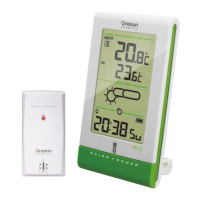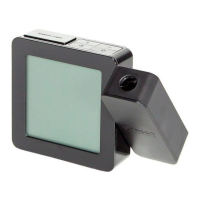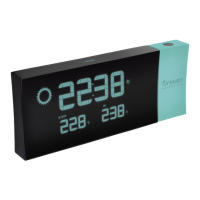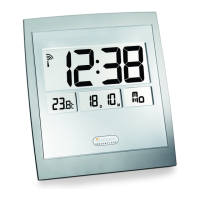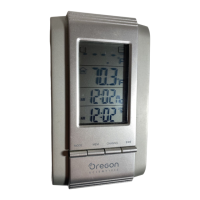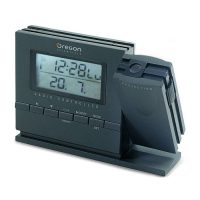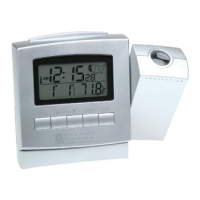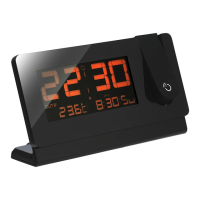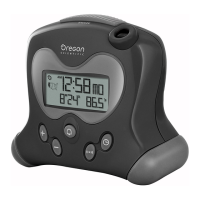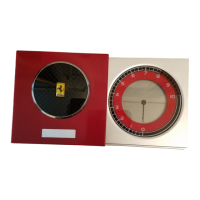The transmission range may vary depending on many
factors. You may need to experiment with various
locations to get the best results.
NOTE We recommend that you use alkaline batteries
with this product for longer usage and consumer grade
lithium batteries in temperatures below freezing.
SENSOR DATA TRANSMISSION
Outdoor sensor
The main unit will automatically search for the outdoor
sensor. The sensor reception icon in the remote sensor
area shows the status:
ICON DESCRIPTION
Main unit is searching for
sensor(s)
A channel has been found
The sensor cannot be found.
NOTE If the sensor is not found, check the batteries,
obstructions, and remote unit location.
out of direct sunlight and moisture.
• Position the sensor facing main unit, minimizing
obstructions.
• Place the sensor in a location with a clear view to
the sky, away from metallic or electronic objects.
• Position the sensor close to the main unit during
cold winter months.
CLOCK
CLOCK RECEPTION
This product is designed to synchronize its clock
automatically with a clock signal.
EU / UK to select the signal received.
• EU: DCF-77 signal: within 1500 km (932 miles) of
Frankfurt, Germany.
• UK: MSF-60 signal: within 1500 km (932 miles) of
Anthorn, England.
To enable / disable signal reception
Touch and hold to enable, or to disable signal
signal
reception.
NOTE Reception takes 2-10 minutes. If the signal is
weak, it can take up to 24 hours to get a valid signal.
BAR339P_M_EN_R1.indd 4 6/21/07 2:08:04 PM

